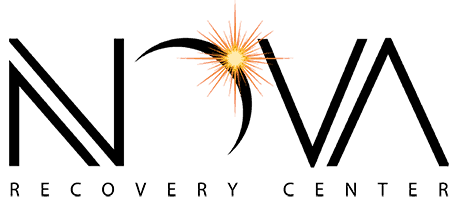The Science Behind Inpatient Drug Rehab: Breaking Down the Treatment Process
Last Updated on March 24, 2025

Table of Contents
Inpatient drug rehab is an evidence-based treatment approach that involves a structured and intensive program to help individuals struggling with addiction recover from substance abuse. While the treatment process may vary based on the specific needs and goals of each individual, the science behind inpatient drug rehab remains consistent. By providing a supportive and therapeutic environment, along with medical supervision and evidence-based therapies, inpatient drug rehab can help individuals overcome addiction and achieve long-term recovery. In this blog, we break down the treatment process of inpatient drug rehab and explore the science behind its effectiveness.
Understanding Inpatient Drug Rehab
Inpatient drug rehab centers are facilities that provide 24-hour care and support for individuals struggling with addiction. These facilities adopt an evidence-based approach to substance abuse treatment, and their programs are designed to be comprehensive and structured. The goal of inpatient drug rehab is to help individuals overcome addiction and achieve long-term recovery by addressing the physical, mental, and emotional aspects of addiction.
During the inpatient drug rehab process, individuals undergo a thorough assessment to determine their specific needs and goals. This assessment takes into account their medical history, drug history, mental health, and addiction severity level. Based on this assessment, a personalized treatment plan is developed that includes a range of evidence-based therapies and services.
The inpatient drug rehab process also focuses on holistic treatments such as meditation and yoga, which help individuals to manage their mental health and emotional well-being. Additionally, regular exercise and nutritious meals are also emphasized to promote overall health and well-being.
The Detoxification Phase
The detoxification process aims to eliminate the toxic substances from the body and minimize the withdrawal symptoms.
Withdrawal symptoms can often include:
- Nausea
- Vomiting
- Anxiety
- Insomnia
- Tremors
- Seizures
At an inpatient drug rehab center, the detoxification process is typically medically supervised and managed by a team of healthcare professionals. This team includes physicians, nurses, and addiction specialists who address medical issues that may arise during the detoxification process.
Medical treatment and medications may manage withdrawal symptoms and reduce the risk of medical complications. The goal of the detoxification phase is to ensure that individuals safely and comfortably manage the withdrawal symptoms associated with drug or alcohol addiction.
Once the detoxification phase is complete, individuals can then begin the next phase of their treatment, which often involves counseling, therapy, and other evidence-based treatments aimed at addressing the underlying causes of addiction and promoting long-term recovery.
The Behavioral Therapy Phase
During the behavioral therapy phase, individuals will work with trained therapists and counselors who specialize in addiction treatment. They will participate in different types of therapy sessions, including individual and group therapy. The therapeutic approaches used in behavioral therapy can vary, depending on the individual’s needs and preferences.
Cognitive-behavioral therapy (CBT) is a common type of therapy useful in addiction treatment. CBT helps individuals identify harmful and negative thought patterns that contribute to their addiction and teaches them skills to replace those thoughts with positive and healthy ones.
Dialectical behavior therapy (DBT) is another type of therapy useful in addiction treatment. It focuses on helping individuals develop mindfulness skills and regulate their emotions to manage their addiction triggers.
The behavioral therapy phase is critical to the success of an individual’s inpatient drug rehab journey. It helps them develop a better understanding of their addiction and the underlying issues that contribute to it, while also equipping them with the coping skills they need to manage their addiction long-term.
Medication-Assisted Treatment
In addition to behavioral therapy, medication-assisted treatment is another evidence-based approach that is commonly used in inpatient drug rehab centers to treat individuals struggling with addiction. This approach involves the use of medication to help manage withdrawal symptoms and cravings associated with drug addiction.
Medications used in medication-assisted treatment must be prescribed and administered by a licensed medical professional. These medications work by altering the brain’s chemistry to reduce the severity of withdrawal symptoms and cravings.
Some commonly used medication-assisted treatment medications include:
- Methadone: Methadone is an opioid agonist that works by blocking the effects of other opioids and reducing withdrawal symptoms and cravings.
- Buprenorphine: Buprenorphine is a partial opioid agonist that works by reducing cravings and withdrawal symptoms without producing the intense euphoria associated with other opioids.
- Naltrexone: Naltrexone is an opioid antagonist that works by blocking the effects of opioids and reducing cravings.
Medication-assisted treatment is often combined with behavioral therapy to provide individuals with a comprehensive treatment approach. This combination can help individuals better manage their addiction and improve their chances of achieving long-term recovery.
It is important to note that medication-assisted treatment should only be used under the supervision of a licensed medical professional. It is not a cure for addiction and should be used in conjunction with other evidence-based treatment approaches to ensure an individual’s best chance at a successful recovery.
Aftercare and Relapse Prevention
After successfully completing an inpatient drug rehab program, it is important to continue with aftercare to support long-term recovery. Aftercare programs provide ongoing support and resources to individuals in recovery and help prevent relapse.
Some common aftercare programs and relapse prevention strategies include:
- Outpatient Therapy: Outpatient therapy allows individuals to continue therapy sessions after they have completed the inpatient program. This type of therapy can include individual or group therapy sessions and helps individuals maintain their recovery progress.
- 12-Step Programs: 12-step programs like Alcoholics Anonymous (AA) or Narcotics Anonymous (NA) provide individuals with a supportive community of others in recovery. These programs use a structured approach and encourage individuals to work through the 12 steps for ongoing success in recovery.
- Sober Living: Sober living homes provide a supportive and drug-free living environment for individuals in recovery. These homes offer a safe space for individuals to continue their recovery journey and develop essential life skills.
- Relapse Prevention Techniques: Relapse prevention techniques include identifying triggers, developing coping skills, and creating a plan for when cravings or difficult situations occur. These strategies help individuals avoid relapse and maintain their sobriety.
Aftercare programs and relapse prevention strategies are essential components of the treatment process. They provide ongoing support and guidance to individuals in recovery and help them achieve long-term success. It’s important to continue with aftercare programs and use relapse prevention techniques to maintain sobriety in recovery.
Measuring Success in Inpatient Drug Rehab
Measuring success in inpatient drug rehab is crucial to determine the efficacy of the treatment process. There are several ways in which to measure success, including:
- Completion of the program: One measure of success is how many individuals complete the inpatient drug rehab program. Completion rates vary, but a higher rate of completion suggests a higher likelihood of achieving long-term sobriety.
- Reduced drug and alcohol use: Another measure of success is how much an individual’s drug and alcohol use decreases during and after the program. A reduction in substance use indicates progress towards achieving long-term sobriety.
- Improved physical and mental health: Inpatient drug rehab programs aim to improve an individual’s physical and mental health. Measuring success can involve tracking an individual’s progress in these areas, such as through medical exams, therapy sessions, and medication management.
- Increased functioning in daily life: A successful inpatient drug rehab program should result in increased functioning in an individual’s daily life, such as improved work or school performance and better relationships with family and friends.
- Continued engagement in aftercare programs: Aftercare programs are essential for long-term success in recovery. One measure of success is how many individuals continue to engage in aftercare programs and relapse prevention strategies after completing the inpatient program.
Measuring success in inpatient drug rehab is not a one-size-fits-all approach. Success can be defined and measured in various ways, depending on individual needs and goals. However, evaluating success is key to determining the efficacy of the treatment program and supporting individuals in achieving long-term sobriety.
Sober Fun in Austin, Texas
Just because someone is in recovery, it does not mean they cannot have fun. Austin, Texas, has plenty of entertainment options for the sober community. From music venues to outdoor activities, sober individuals can find lots to do in this vibrant city.
- Music Venues: One of Austin’s most popular destinations for music lovers is Austin City Limits Live at The Moody Theater. They host various concerts throughout the year, including country, jazz, and rock. The venue has an impressive sound system and exceptional view of the stage. For those looking for a more laid-back experience, the Cactus Cafe offers more intimate shows with a quieter atmosphere.
- Outdoor Activities: Austin offers plenty of outdoor activities for those who prefer to spend time in nature. The city features numerous hiking and biking trails, such as the Barton Creek Greenbelt and Lady Bird Lake Hike and Bike Trail. Zilker Park is another popular destination for outdoor enthusiasts, with a pool, picnic areas, and botanical gardens.
- Museums and Art Galleries: The city’s museum district features various cultural institutions that are fun, educational, and engaging. The Blanton Museum of Art and the Harry Ransom Center are great destinations for art and literature enthusiasts. The Texas Memorial Museum focuses on natural history, with exhibits featuring fossils, geology, and wildlife. The LBJ Presidential Library offers a glimpse into America’s past, with interactive exhibits and artifacts.
Sober fun in Austin, Texas, is possible, and individuals in recovery can enjoy the city’s many offerings without compromising their sobriety. It’s a great city to explore, learn, and grow in sobriety.
Recovery With Nova
At Nova Recovery Center, Houston we provide our patients with a very comfortable detox process, where medical professionals provide monitoring and care around the clock. You will be provided with all the medications you need to combat the withdrawal symptoms. You will enroll in the in-patient recovery program where you’ll learn to stay away from drugs, through counseling, group therapy, and so on.
Nova Recovery Center commits to helping you overcome your addiction so you can get back to what is most important to you. If you or someone you know are struggling with addiction, Nova Recovery Center can provide support. We have locations in Austin, Houston, and Wimberley Texas. Call today to begin your journey in recovery at (888) 428-1501.

